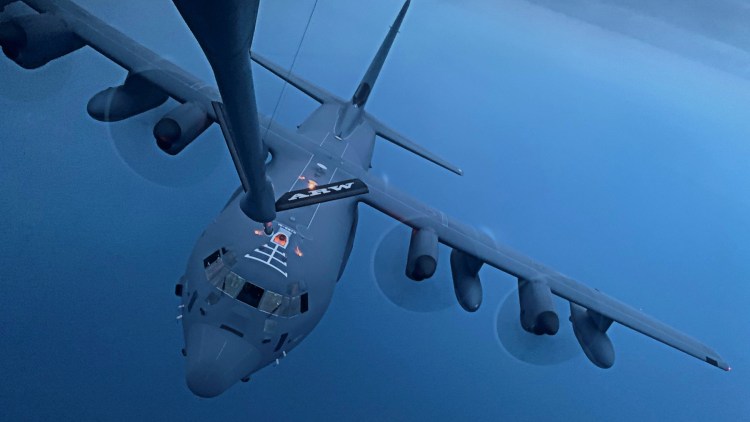The US Air Force is on the hunt for new engines to power its upcoming fleet of aerial refueling tankers, according to a request for information (RFI) issued on Monday, March 18.
The Next-Generation Air Refueling System (NGAS) aircraft is designed to replace the current aerial tankers in the service.
Phasing Out Aging Workhorses
The NGAS program aims to replace the Air Force’s current workhorses, the Boeing KC-46 Pegasus and the KC-135 Stratotanker.
The KC-135, a derivative of the Boeing 707 airliner, has been a mainstay of aerial refueling operations since the 1950s.
While it has undergone numerous upgrades, its age is undeniable.
The KC-46, introduced in 2011, has faced its own share of development challenges, with delays and technical issues plaguing the program.
KC-46 Pegasus (Image source: DVIDS)
The need for a new generation of tankers is driven by several factors.
Geopolitical realities necessitate a more robust aerial refueling capability, particularly in light of potential conflicts with near-peer adversaries with advanced air defense systems.
The current tankers may struggle to operate effectively in such contested environments.
Additionally, improved fuel efficiency and operational range are crucial for supporting modern combat aircraft that can fly farther and require more fuel.
Open to Innovation: New Engines or Upgraded Classics?
The RFI highlights the Air Force’s openness to innovative solutions.
It welcomes proposals for both entirely new engine designs and modifications to existing ones. This approach allows established engine manufacturers to leverage their expertise while also encouraging participation from new players with potentially disruptive technologies.
KC-135 Stratotanker aircraft (Image source: DVIDS)
A key requirement for the NGAS engine is a reduced runway takeoff distance, suggesting that the aircraft might be a larger and heavier aircraft compared to its predecessors.
This increase in size could be driven by two main factors: the need to carry more fuel for extended-range refueling or the integration of additional functionalities beyond just basic refueling operations.
Speculation points towards a potential stealthier design, which would allow the NGAS to operate in high-threat environments with less risk of detection.
Building the NGAS: A Multi-Step Process
The engine search represents just one step in the NGAS development process.
The initial RFI issued in January 2023 focused on the entire aircraft.
At that stage, the Air Force sought proposals outlining the capabilities and potential revolutionary aspects of potential NGAS designs.
This latest engine RFI indicates significant progress, with the Air Force moving towards finalizing the aircraft’s technical specifications.
Timeline and Next Steps
Industry partners have until April 30 to respond to the engine RFI.
The Air Force anticipates kicking off the NGAS program in the third quarter of 2025, with deliveries of the first operational tankers expected by the mid-2030s.
This timeline suggests a deliberate and measured approach, ensuring the NGAS delivers the necessary capabilities while minimizing technical risks.
The NGAS program represents a significant investment in the future of US Air Force aerial refueling capabilities.
The choice of engine will play a crucial role in determining the performance and effectiveness of this next-generation tanker fleet.
With a focus on innovation and a commitment to meet evolving operational demands, the NGAS program promises to ensure the Air Force has the aerial refueling capacity it needs to project power and maintain air superiority for decades to come.



